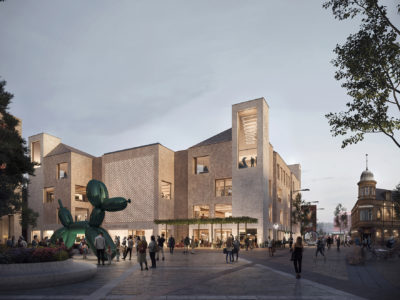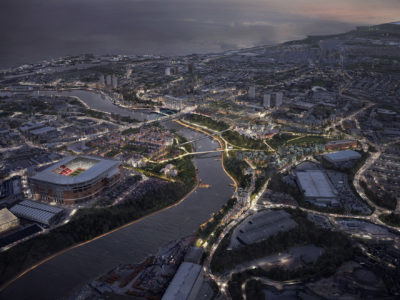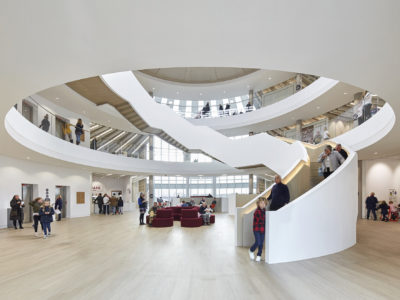Library of the future - Q&A with Architectural Review

Steve Dickson
Associate Partner,
Head of Interior Design
Steve leads our interior design team and drives FaulknerBrowns’ work in the library and culture sector. He brings a particular interest in social, cultural and workplace behaviours to key projects such as Culture House. Steve has also contributed to a variety of design guides, including ‘21st Century Libraries, Changing Forms, Changing Futures’ and is a regular speaker at IFLA, the International Federation of Library Associations and Institutions.
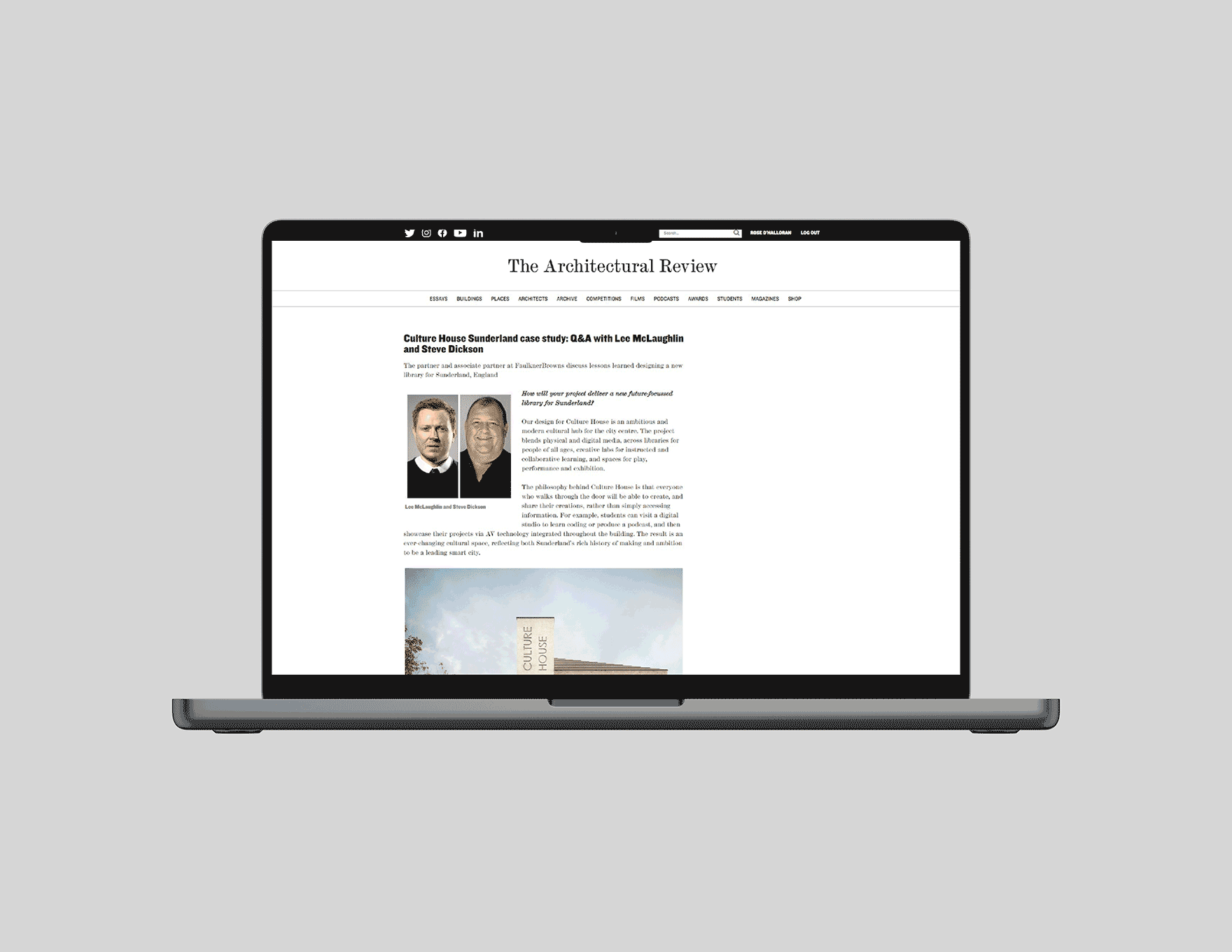
The Municipality of Milan recently announced an international contest for a landmark new library – the European Library of Information and Culture. Lee McLaughlin and I were asked to share our lessons learned designing Sunderland’s Culture House, in the following interview with Architectural Review.
How will your project deliver a new future-focused library for Sunderland?
Our design for Culture House is an ambitious and modern cultural hub for the city centre. The project blends physical and digital media, across libraries for people of all ages, creative labs for instructed and collaborative learning, and spaces for play, performance and exhibition.
The philosophy behind Culture House is that everyone who walks through the door will be able to create, and share their creations, rather than simply accessing information. For example, students can visit a digital studio to learn coding or produce a podcast, and then showcase their projects via AV technology integrated throughout the building. The result is an ever-changing cultural space, reflecting both Sunderland’s rich history of making and ambition to be a leading smart city.
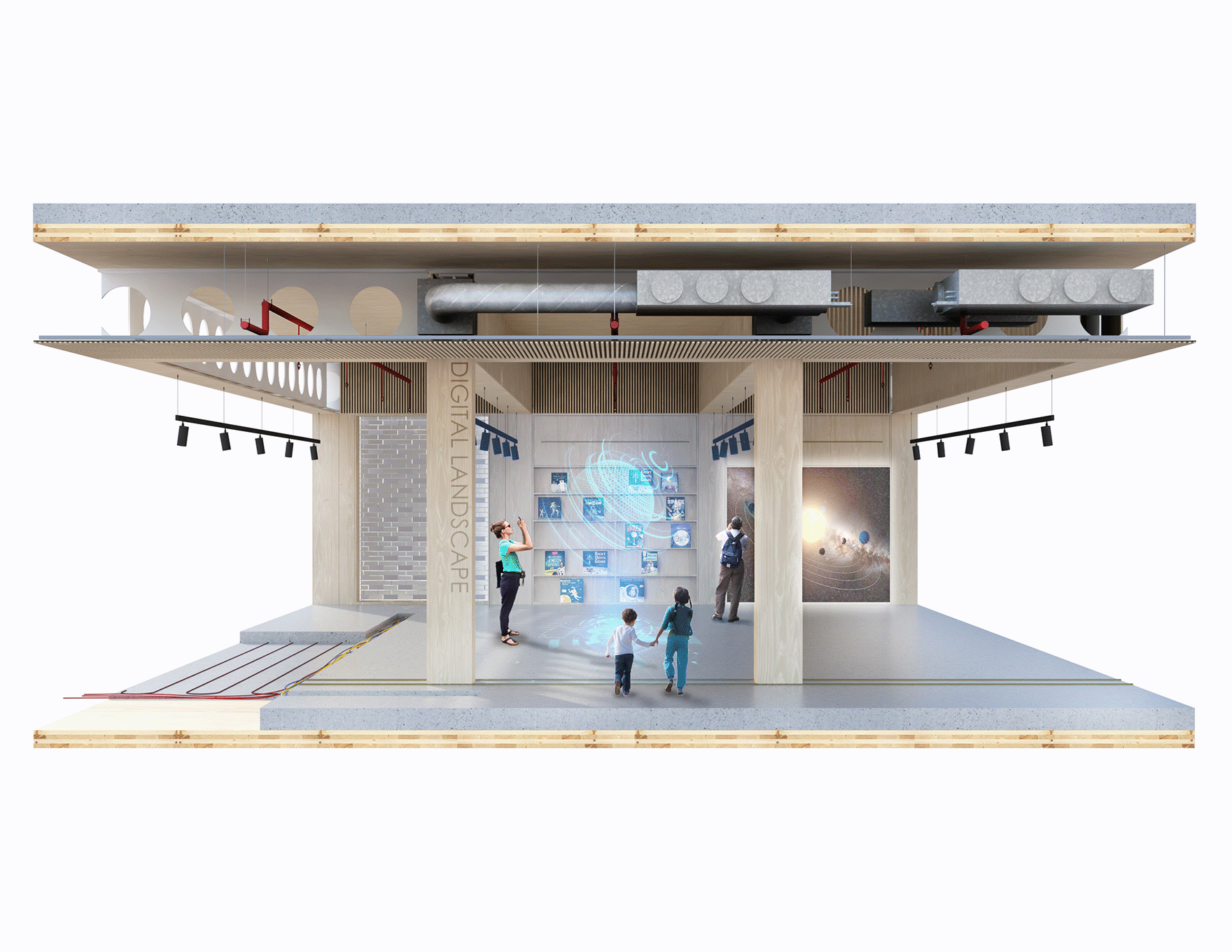
Which architectural, material, visual and other methods did you harness in your design?
The aim is for Culture House to be a living room in the heart of the city, a community building that is free and open to anyone. We used warm and natural materials, from timber finishes in poplar to clay roof tiles and buff brick, to create a sense of welcome and home. Carbon conscious decision making has also been central to the building philosophy, resulting in a timber-steel hybrid structure to meet a through life target of 900 kgCO2/m2 of embodied carbon and an entirely electric building servicing system, with air source heat pumps and efficient LED lighting.
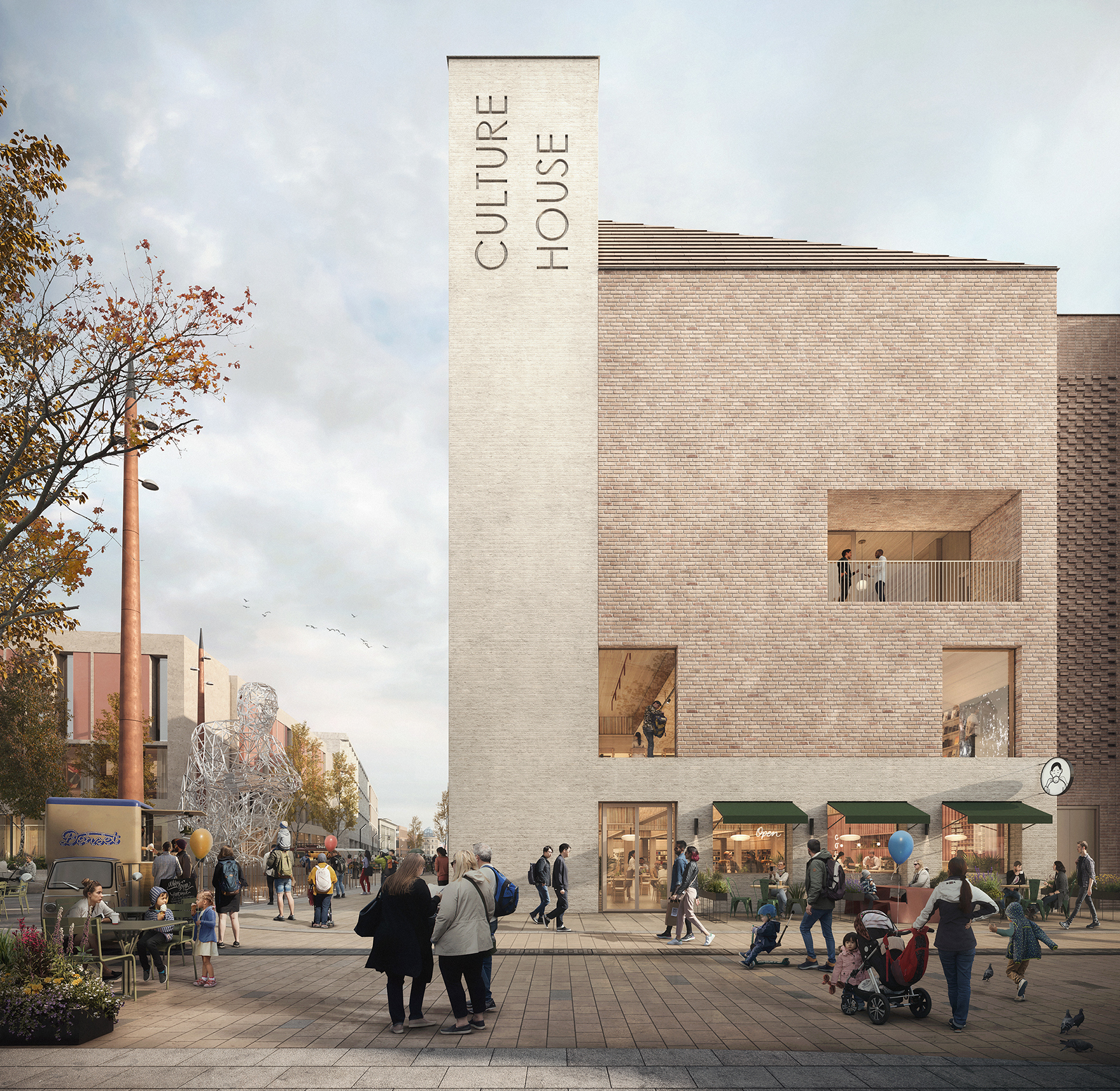
What advice would you have to contest participants on designing a new library and ‘new-generation cultural hub of international reach’ for Milan?
Firstly, use the locality and specifics of place as a design driver. Culture House is part of a wider regeneration, as Sunderland strives to diversify a post-retail city centre economy. New centres of cultural gravity can drive footfall and increase both social and economic value. The project was key to the city’s successful bid for £25,000,000 of funding from the government’s Future High Streets Fund.
Secondly, see beyond the physical building. A modern library must be more than a collection of material. Culture House will be a hub within a wider virtual network, sharing and connecting with the city and beyond.
